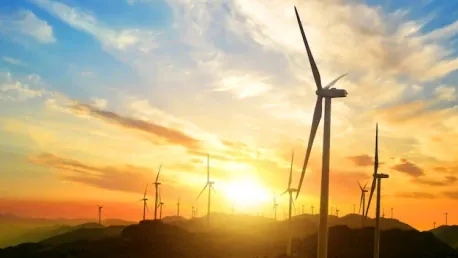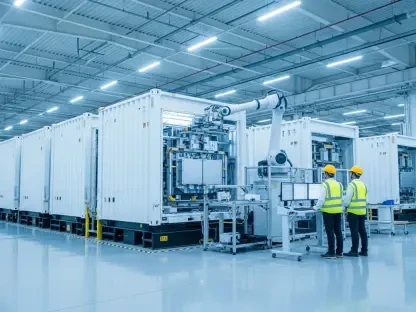Transforming depleted oil and gas wells into energy storage systems represents a groundbreaking approach to addressing both energy storage challenges and environmental concerns. This innovative concept of geothermal-assisted compressed-air energy storage (GA-CAES) aligns seamlessly with global efforts aimed at transitioning to a zero-carbon energy system by 2050. By leveraging existing infrastructure, it creates an efficient and sustainable method to meet the growing demands for renewable energy storage.
Addressing Renewable Energy Challenges
Renewable energy sources like solar and wind power offer substantial benefits but come with the challenge of intermittency. Their inability to produce consistent power on demand necessitates robust storage solutions that can stabilize the energy grid. Effective energy storage systems play a critical role in maximizing renewable energy utilization, reducing reliance on fossil fuels, and enhancing overall grid stability. Additionally, these systems contribute to transportation electrification and bolster energy resilience during extreme weather events, ensuring a reliable power supply despite unpredictable conditions.
Efficient energy storage is key to harnessing the full potential of renewable sources. Without adequate storage solutions, excess energy generated during peak production periods can go to waste, while insufficient power supply during low production periods can lead to reliance on non-renewable energy sources. Addressing this intermittency is essential for achieving energy independence and reducing greenhouse gas emissions.
Compressed Air Energy Storage (CAES) Technology
Compressed Air Energy Storage (CAES) technology involves storing energy by compressing air within storage chambers and releasing it to generate electricity when needed. CAES systems are notable for their ability to store large amounts of energy over extended periods, making them ideal for large-scale energy storage applications. This technology is especially valuable during periods of high energy demand, as it provides a reliable backup that contributes to the stability of the energy grid.
However, CAES faces several challenges, including lower round-trip efficiencies, slower response times, and high capital costs. Lower efficiency means that not all the energy stored can be recovered, which can affect overall performance and cost-effectiveness. Additionally, the technology’s high initial investment can be a barrier to widespread adoption. To address these challenges, ongoing research focuses on improving the economic efficiency and operational performance of CAES systems, with recent studies exploring the integration of geothermal heat to enhance their efficiency.
Repurposing Depleted Oil and Gas Wells
In an innovative approach proposed by researchers at Penn State, depleted oil and gas wells are being repurposed for geothermal-assisted compressed-air energy storage (GA-CAES). This method utilizes the inherent stability and insulation of underground wells to improve system efficiency and storage capacity. By leveraging geothermal heat, GA-CAES systems can achieve higher efficiency and reliability, making them a promising solution for the future of energy storage.
The repurposing of these abandoned wells addresses significant environmental concerns. Depleted wells often pose risks such as greenhouse gas leakage and groundwater contamination, which can have long-lasting negative impacts on the environment and public health. Reusing these wells for energy storage mitigates these risks while simultaneously creating new employment opportunities in regions with a rich energy industry history.
Economic and Environmental Benefits
The Environmental Protection Agency (EPA) estimates that there are approximately 3.9 million depleted wells in the United States, posing significant environmental risks. To address these issues, the US government has allocated funds for capping and reclaiming these wells. However, repurposing these wells for GA-CAES offers a sustainable and economically viable alternative that converts environmental liabilities into valuable energy assets.
Research indicates that GA-CAES can increase energy storage efficiency by approximately 9.5%, making it an economically attractive option for large-scale energy storage. This method eliminates the need for heavy upfront drilling costs and leverages the geothermal heat to enhance storage capacity. The efficiency gains and cost savings associated with repurposing existing infrastructure make GA-CAES a compelling solution for achieving sustainable and clean energy objectives.
Critical Role in the Energy Industry
The integration of GA-CAES systems utilizing existing infrastructure presents a win-win solution by reducing initial investment costs while increasing system efficiency. This approach not only mitigates environmental impacts associated with abandoned wells but also supports the transition to a clean energy future. By maintaining employment in traditional energy communities, GA-CAES contributes to economic stability and promotes regional development.
NextEra Energy, Inc. serves as a leading example of a company investing in renewable energy generation and advanced energy storage solutions. As the owner of Florida Power & Light Company (FPL), the largest electric utility in the United States, NextEra Energy is strategically expanding its natural gas and nuclear generation capacities to meet the growing demand for electricity. Their investments in renewable and battery storage technologies underscore the importance of diversified energy strategies to support the transition to a sustainable and green energy future.
A Promising Path Forward
Transforming depleted oil and gas wells into energy storage systems represents a revolutionary approach to solving energy storage challenges while addressing environmental concerns. This innovative concept, known as geothermal-assisted compressed-air energy storage (GA-CAES), perfectly aligns with global efforts to transition to a zero-carbon energy system by 2050. By repurposing existing infrastructure, GA-CAES offers a highly efficient and sustainable method to meet the escalating demands for renewable energy storage.
Instead of building new facilities from the ground up, we can use these old oil and gas wells to store energy in the form of compressed air, which can be released to generate electricity when needed. This method makes use of geothermal heat from the earth to improve the efficiency of the storage process, making it a win-win for both the environment and energy sectors.
This approach not only provides a practical solution to the intermittency issues associated with renewable energy sources like wind and solar but also tackles the challenge of responsibly decommissioning old oil and gas infrastructure. Utilizing these existing wells reduces the environmental impact of building new storage facilities and cuts down on the resources and costs involved.
In essence, GA-CAES exemplifies an innovative, resourceful way to transition towards a sustainable, zero-carbon future, ensuring a reliable and eco-friendly energy supply for years to come.









